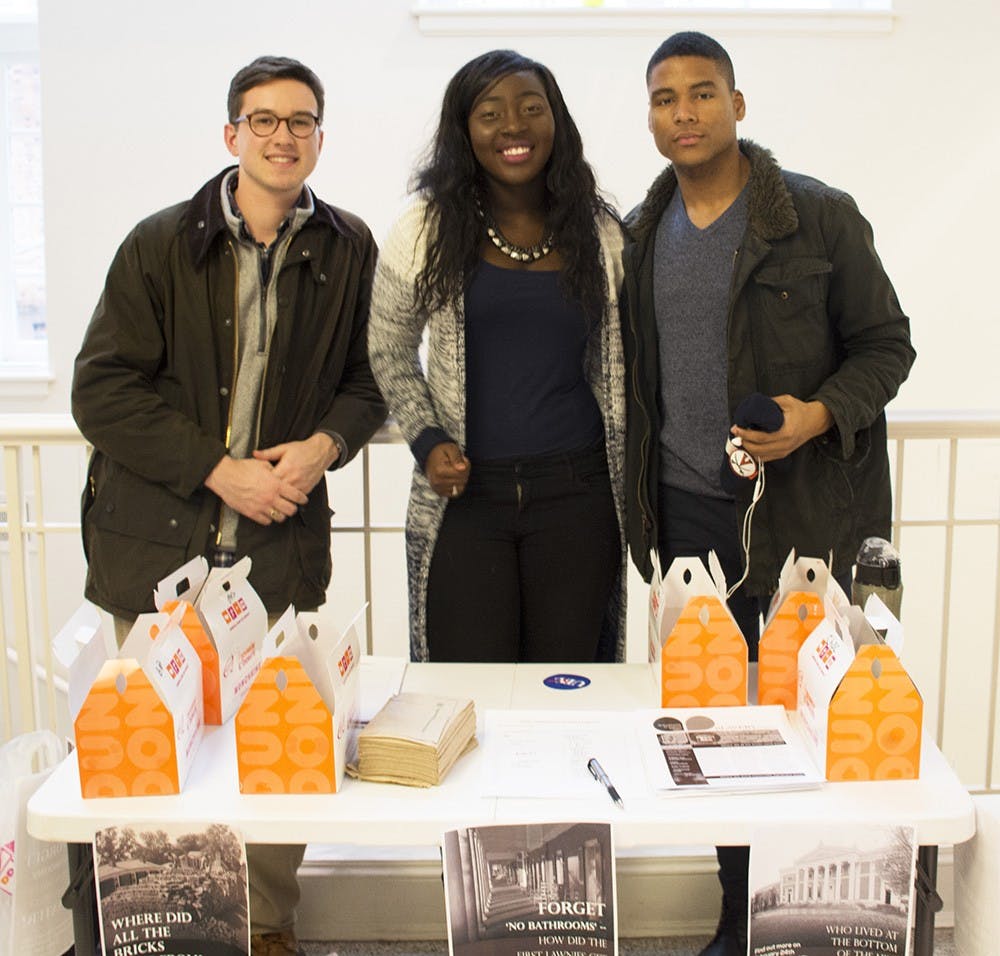The Memorialization for Enslaved Laborers, or MEL, held an event Wednesday in Newcomb Hall to raise awareness of the organization.
Members of MEL spoke with interested students about the CIO’s background and initiatives as they passed by. Students were also offered free donut holes and handouts with more information on slavery’s history at the University.
“MEL is a CIO on Grounds that was created to galvanize students behind the idea of recognizing enslaved laborers who built this University and made the University function for its early years,” MEL Chair Diana Wilson, a second-year College student, said.
The goal of MEL is to recognize the accomplishments of slaves at the University and eventually institute a memorial for the enslaved laborers, Wilson said.
“To me, it’s legendary to be a part of a team that creates a memorial for enslaved laborers,” Wilson said. “People should not just watch, they should be a part of it.”
Fourth-year College and Batten student Ali Jawetz, who works with the President’s Commission on Slavery at the University, or PCSU, said MEL was created in 2009 but was just revitalized last semester to assist University administration on their work about the history of slavery at the University.
PCSU is a three-year research study about slavery at the University aimed at making improvements to the school based on the study’s discoveries.
Some of these improvements are a part of the new initiatives MEL is currently working to create, Jawetz said.
In addition to a physical memorial, Wilson said MEL members want to create a heritage trail, include information centers about enslaved laborers in the Rotunda and — with the help of the University Guide Service — institute tours which include the history of enslaved laborers.
Jawetz also said the education committee of PCSU is considering ways to encourage more students to take classes about the subject and may even consider implementing a diversity requirement for first-year students.
The CIO may also work on initiatives to rename buildings who are named after known white supremacists and eugenicists, including Jordan Hall and Beringer Hall, Jawetz said.
Wilson also said an alternative is naming new buildings after enslaved laborers rather than attempting to rename older buildings. The University recently did this with the naming of the Gibbons Dorm this past summer.
Regardless of the solution, Wilson said she wants some of the decisions MEL makes to be in the hands of students who are a part of the organization.
“MEL was really started based on the voices of students, and since the PCSU came out, it’s become more of an administrative idea,” Wilson said. “We’re really trying to put it back in the hands of the students so that we can use our voices and power.”
The CIO currently has approximately 25 members but gained more interested students during Wednesday’s event.
Fourth-year College student Natalie May attended the event because she was curious about what was happening.
“I’m familiar with the organization, and I think it’s a particularly relevant cause that I’m interested in,” said May.







